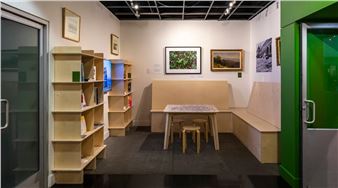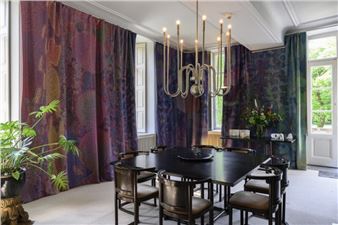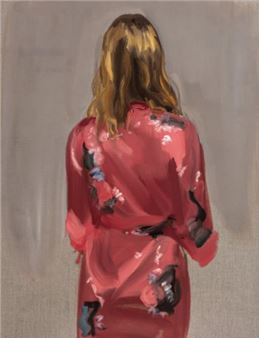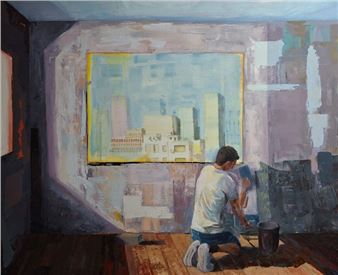Thinking Through Cloth
Textiles is a cultural field based on materials and actions that are connected by the maker to form a fiber structure into a practical object or an object that is artistic or symbolic. From the beginning of human culture until today, materials undergo actions that are associated with textiles such as spinning, weaving, knotting, felting and following this weaving, knitting, embroidering, beading, dying, draping or sewing as well as unraveling and tearing. From ancient combinations of materials to cognition, from a braid of fibers to global communication cables, we find these actions, materials and textiles also as metaphors used in society such as āspin a taleā and āsocial fabricā.
In the exhibition there are eight participants, designers with a label for wearable textiles, as well as designers who are researchers of textiles as a structure, object or canvas for an image.
The designers present new works from their on-going practice, based on their skills in basic textile practice.
The woolen scarves by Meitar Karni investigate the relationship between knitting and weaving combining color and rhythm. In a small format, Haim Hakimyan repeatedly reexamines the variables that are the basis of weaving, whereas Roxy Munteanu focuses on textile as an object considering it by punching holes in material that is not inherently fabric. The silk scarves made by Michal Luria become nonfunctional used as a canvas with images of nails, hammers and ceramic plate shards, just as the socks made by Maayan Gutfeld where her design for a functional item is simultaneously an image and ground for printing.
Yael Harnik examines familiar striped fabric as a graphic image which varies depending on the stitching and gathering to become a three-dimensional object with two patches of color and a blurred border between them as found in hand dying.
Katya Zorin Kalev raises symbolic aspects of creating textiles where denim or a coke can become a day to day charm when combined with dry palm tree bark. Knotting is the basis of Neta Teslerās stools as well as the monumental good luck amulet with a new combination of parts of a functional object placed in the space like a totem or charm, marking in its large presence a wish for safety and hope.
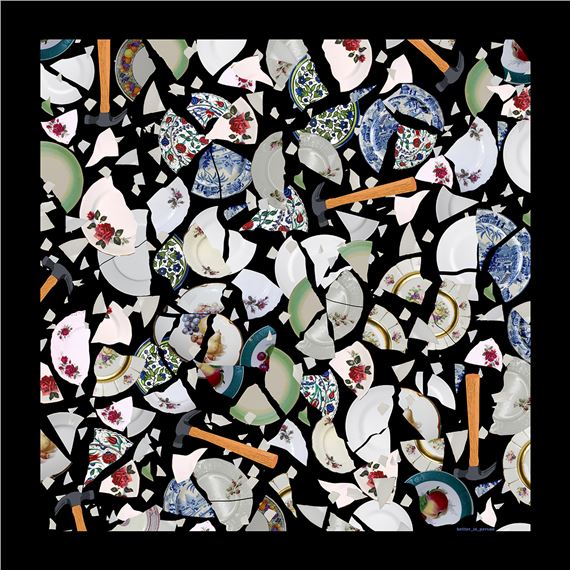
Recommended for you
Textiles is a cultural field based on materials and actions that are connected by the maker to form a fiber structure into a practical object or an object that is artistic or symbolic. From the beginning of human culture until today, materials undergo actions that are associated with textiles such as spinning, weaving, knotting, felting and following this weaving, knitting, embroidering, beading, dying, draping or sewing as well as unraveling and tearing. From ancient combinations of materials to cognition, from a braid of fibers to global communication cables, we find these actions, materials and textiles also as metaphors used in society such as āspin a taleā and āsocial fabricā.
In the exhibition there are eight participants, designers with a label for wearable textiles, as well as designers who are researchers of textiles as a structure, object or canvas for an image.
The designers present new works from their on-going practice, based on their skills in basic textile practice.
The woolen scarves by Meitar Karni investigate the relationship between knitting and weaving combining color and rhythm. In a small format, Haim Hakimyan repeatedly reexamines the variables that are the basis of weaving, whereas Roxy Munteanu focuses on textile as an object considering it by punching holes in material that is not inherently fabric. The silk scarves made by Michal Luria become nonfunctional used as a canvas with images of nails, hammers and ceramic plate shards, just as the socks made by Maayan Gutfeld where her design for a functional item is simultaneously an image and ground for printing.
Yael Harnik examines familiar striped fabric as a graphic image which varies depending on the stitching and gathering to become a three-dimensional object with two patches of color and a blurred border between them as found in hand dying.
Katya Zorin Kalev raises symbolic aspects of creating textiles where denim or a coke can become a day to day charm when combined with dry palm tree bark. Knotting is the basis of Neta Teslerās stools as well as the monumental good luck amulet with a new combination of parts of a functional object placed in the space like a totem or charm, marking in its large presence a wish for safety and hope.

 ARTISTS
ARTISTS










